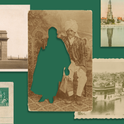Can a woman be a diplomat? This might seem an odd question in the 21st century, when women can be astronauts, business executives, media tycoons or anything else they set their mind to. But in Britain in the first half of the 20th century, the capacity of a woman to represent her nation overseas was a topic of hot debate. Feminists clamoured for equality, while the Foreign and Commonwealth Office chiefs warned that the appointment of female diplomats would endanger British prestige abroad. It was not until 1946 that the government conceded that it would be safe to let women loose in Britain’s embassies.
So what accounts for women’s late arrival on the diplomatic scene? Most professions grudgingly opened their doors following women’s enfranchisement in 1918, but others—the FCO among them—held out, jealously defending their masculine privileges. Diplomacy, it was argued before various official committees in the 1930s, presented a special case because national interests were at stake. The purported risks of sending female representatives overseas were threefold. The first concern was the effect on foreign governments; how would they react to doing business with a woman? One British official commented in 1934 that they would “probably look upon it as rather a bad joke,” while his colleague predicted worse: foreigners, he argued, “would probably feel that they themselves were not being taken sufficiently seriously for being asked to receive her.” In either case, efforts to promote British global interests would suffer.
The second perceived risk concerned the physical stresses of overseas service, especially in the rougher, consular wing, where officers were posted to seedy port towns or remote places cut off from civilisation. Here, rather like the Colonial Service (which was also barred to women) virile masculine authority was at a premium; how else to subdue the obstreperous crews of British merchant vessels, or quell hordes of riotous foreigners? Women, it was claimed, were too delicate or squeamish to withstand the strains of the consular life.
Finally, opponents of women’s admission pointed to the problems of marital status. A spinster diplomat would be bad value compared to a married man who came with a wife in tow, while a female officer with a husband was simply unthinkable. As the Permanent Secretary at the FCO, Sir Robert Vansittart put it, “his position in diplomatic society would be embarrassing.” Since the early 19th century, British diplomacy had relied on marital teams comprising a male ambassador supported by a gracious spouse, who would preside at glittering entertainments and keep morale high among the embassy staff.
The Second World War destroyed this carefully constructed model at a stroke. Manpower shortages were such that the FCO had no choice but to send highly capable women—such as the Orientalist Freya Stark in Iraq, or the experienced civil servant Mary McGeachy in Washington, DC— to carry out quasi-diplomatic work overseas. They were a small band of pioneers, but their undeniable competence, combined with the spectacle of millions of ordinary women mobilised on the Home Front, left the FCO’s arguments in tatters. In 1946, women were permitted to sit the competitive exam for the Diplomatic Service.
The battle for the FCO was over, but the war for equality had only just begun. The first generation of female recruits faced many obstacles, from hostile superiors in London to sceptical ambassadors abroad who flatly refused to accept a woman in their embassies. Female officers were barred from learning “hard” languages, including Arabic, which closed off a swathe of fascinating postings in the Middle East. Most seriously, women were required to tender their resignations if they wanted to get married—a legacy of the old objections to the hypothetical diplomatic husband. It was only after the abolition of this marriage bar, as late as 1972, that combining career and family became even a remote possibility for female diplomats.
Looking back, it seems extraordinary that the post-war pioneers put up with these blatantly discriminatory practices. But context is important. First, while the FCO was unusual in retaining its marriage bar for so long, other professions from the Civil Service to big business were not exactly bending over backwards to help women juggle career, marriage and motherhood. Even in the 1970s, the “dual-career” family was considered a rare phenomenon by sociologists. Arguably the marriage bar simply formalised the broader social reality that women were being held back in the established professions.
Second, the practical difficulties of integrating women into the diplomatic workforce might have been overplayed by those wedded to the status quo, but they were not entirely fictitious. Diplomacy was distinct from other occupations because it relied on building goodwill with foreign countries where beliefs about gender roles and the family could be very different, such as Latin American nations where Catholicism had a strong social influence, or in more socially conservative cultures like Japan. Ironically, as British global power shrank in the second half of the 20th century, the imperialist bravado which might in an earlier era have convinced an enlightened Permanent Secretary to send a woman ambassador to, say, Iraq or Saudia Arabia, was in short supply. The USA, with its strong current record of appointing women to top diplomatic posts, including Samantha Power at the UN, has arguably taken on that role.
Today, women make up around one in five heads of mission and account for a quarter of senior management posts at the FCOThe latest statistics also reveal a gender pay gap of nearly 11 per cent in the most senior grades at the Foreign Office. This still represents significant progress since the early 1990s, but there are questions to be asked not only about women’s share of the most prestigious ambassadorial jobs, as well as how to care for children or elderly parents when posted half-way across the world—an issue which affects men as much as women. Can a woman be a diplomat? Absolutely, but history teaches us that it may be some time yet before she enjoys full equality with her male colleagues.












